Basics
-
In the beginning there were sticks. Elizabeth’s was slightly longer than Henry’s.
 Evolution of the yardstick from Science Photo Library
Evolution of the yardstick from Science Photo Library -
Sometimes these sticks were stuck in clay
 Mesopotamian sundial clock
Mesopotamian sundial clock -
A seconds pendulum with a known length and a fixed weight were subsequently proposed by both in France for the meter and UK for the yard, but these concepts were found to be limited as gravity varies from place to place.
 From Horologium Oscillatorium Wikimedia Commons
From Horologium Oscillatorium Wikimedia Commons -
In 1834 the House of Parliament was destroyed in a fire, and the offical “yardstick” was lost! Fear not and the law was updated in 1841 as documented in the “Report of the Commissioners Appointed to Consider the Steps to Be Taken for Restoration of the Standards of Weight and Measure, 1841” after a series of sub-optimal redefinitions.
-
The Michelson-Morley experiment (1887), which disproved Aether theory and layed the groundwork for special relativity, required the Michelson interferometer. This was the first tool to establish a measurement of distance based on light.
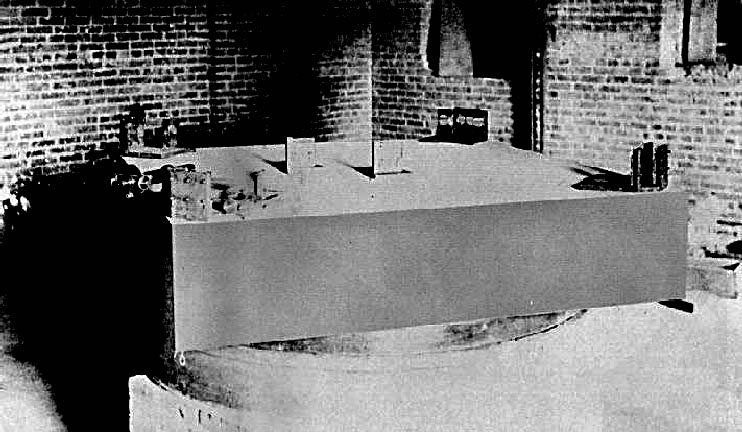
Michelson and Morley’s interferometeric setup 1887 Wikimedia Commons 2016
- Ruling engines to generate periodically precise diffraction gratings to measure light components.
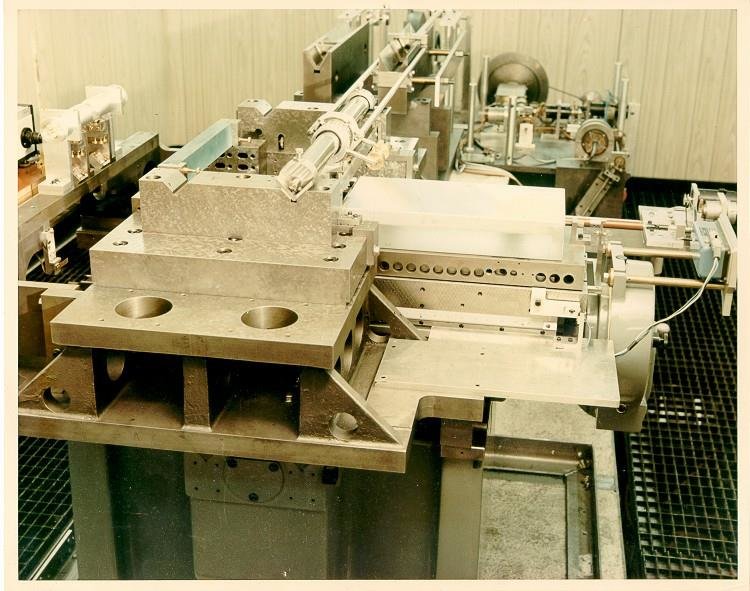 MIT ‘B’ Engine by Prof. George Harrison, MIT 1968 Diffraction Grating Handbook 2020
MIT ‘B’ Engine by Prof. George Harrison, MIT 1968 Diffraction Grating Handbook 2020
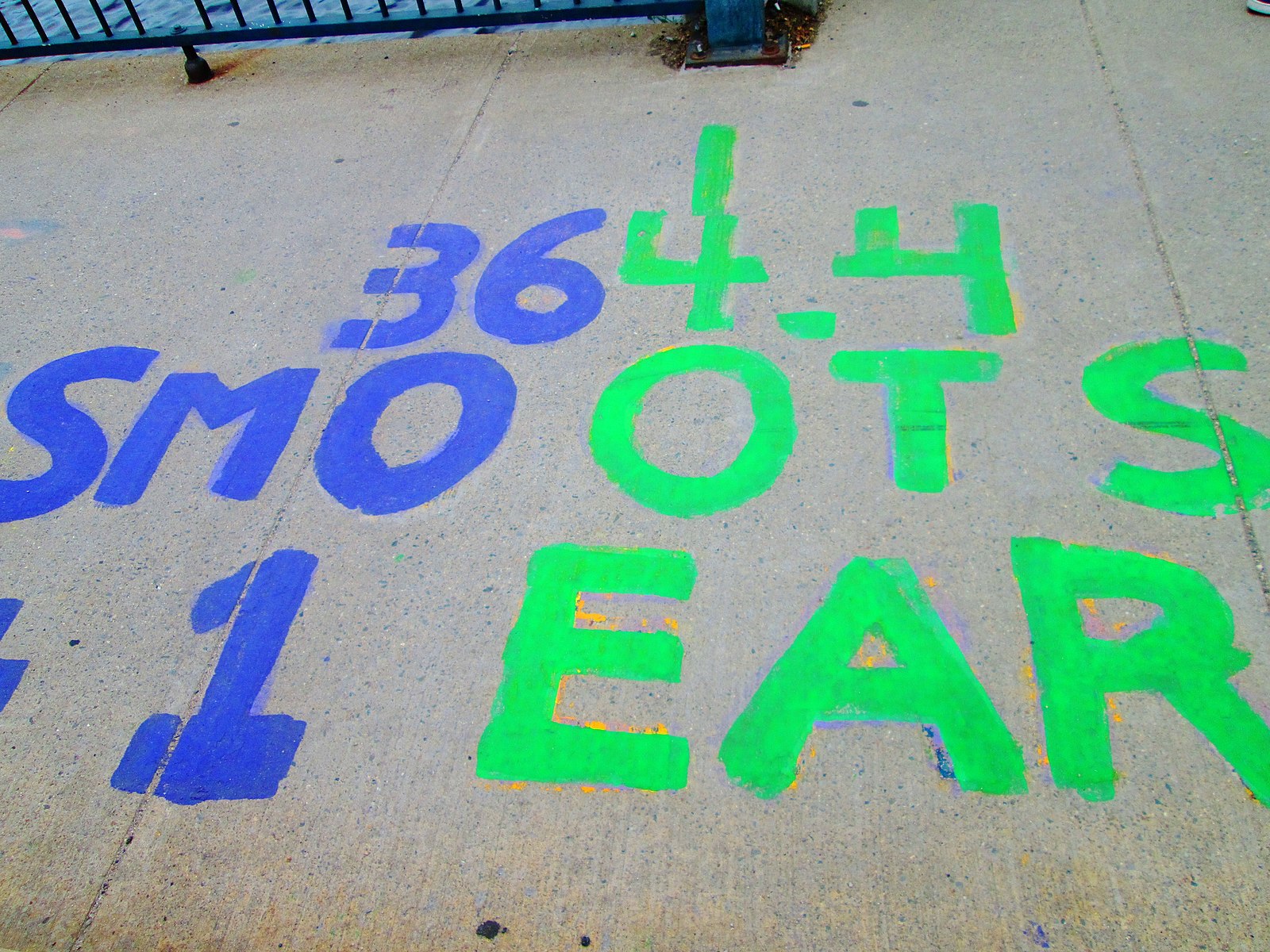 Named for Oliver R. Smoot, a great example of anatomy as a form of measurement
Named for Oliver R. Smoot, a great example of anatomy as a form of measurement
Concepts
(lots of credit to Zach Fredin)
Accuracy and Precision
Accuracy is average error; precision is value consistency. Generally speaking, accuracy is corrected through calibration, but precision is reliant on meausrement technique.
 Pekaje at the English-language Wikipedia, GFDL http://www.gnu.org/copyleft/fdl.html, via Wikimedia Commons. Original file here.
Pekaje at the English-language Wikipedia, GFDL http://www.gnu.org/copyleft/fdl.html, via Wikimedia Commons. Original file here.
Oversampling
Trade bandwidth for resolution, with caveats:
- Each bit costs a factor of 4.
- Requires sensitivity.
- Only increases signal-to-uncorrelated-noise.
Often a built-in ADC peripheral function.
Calibration
Comparison between measured values and a known reference. Zero/span calibration assumes a linear sensor response, and results in slope and offset correction values: 
Linearization
If a sensor does not provide a linear electronic response to a stimulus, an added linearization step may be needed. In many cases it’s easiest to implement this as a lookup table with linear extrapolation between points; the size of the table depends on accuracy requirement and available storage: 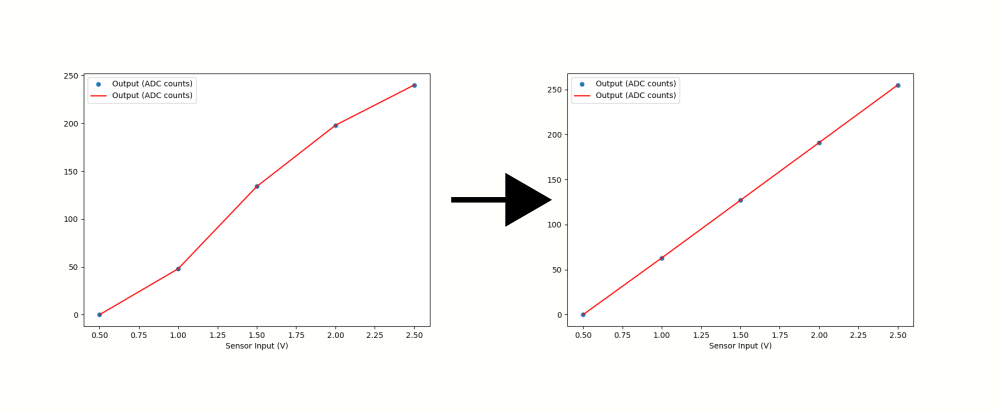
Stability
Sensors drift over time for a veriety of reasons, including component aging, temperature cycling, or inherent lifespan limitations related to the core sensing technology. Stability is often specified in a sensor datasheet in terms of value or percent per unit time; for example, this pressure sensor is advertised to drift less than 0.01 Pa/year.
Turndown
Turndown, or turndown ratio, refers to the practical usable range for a sensor. Generally this means the ratio between the highest measurable value and the lowest within a given accuracy specification. For example, a pressure sensor that can measure up to 1000 psig with 100:1 turndown could be used in an application requiring data down to 10 psig.
Note that turndown is application engineering shorthand; in reality, many sensors will return usable data well beyond their turndown specification, but the resulting value may be unstable or inconsistent device-to-device. When in doubt, test against a standard.
Relative versus Absolute
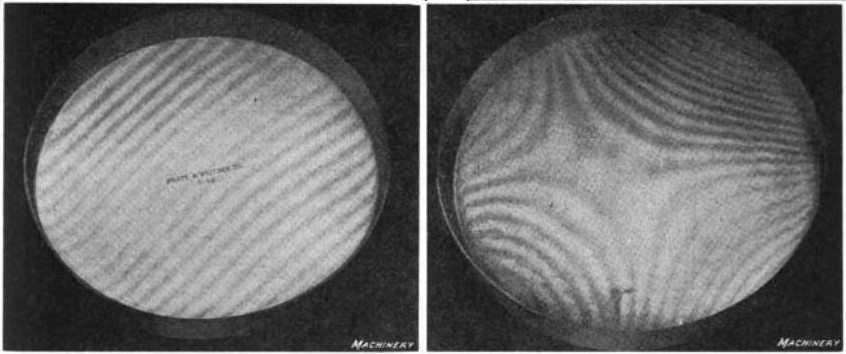 Downloaded 2011-03-04 from Franklin D. Jones “How precision gage-blocks are made” in Machinery, Vol. 26, April, 1920, The Industrial Press, New York, p. 706, fig. 21 & 22 on Google Books
Downloaded 2011-03-04 from Franklin D. Jones “How precision gage-blocks are made” in Machinery, Vol. 26, April, 1920, The Industrial Press, New York, p. 706, fig. 21 & 22 on Google Books
Above, an optical flat is used to evaluate the flatness of a piece of glass under monochromatic light. Interference fringes appear whose pattern relates to the relative flatness between the two objects. Comparing two plates of similar flatness won’t tell you which one is off!
Metrology is Relative
Most sensors compare environmental inputs against an internal reference, which then traces its calibration back to a standard. For example:
- a volt meter uses an internal Zener diode-based voltage reference
- a gauge pressure sensor compares an unknown pressure to atmospheric pressure
- a steel rule is created using a printing machine that traces its length calibration back to a standard
- an oscilloscope uses a time standard which is calibrated back to a standard
Eventually, these relative measurements can be traced back a single reference, such as the old kilogram standard, or a fundamental natural constant, such as the resonance frequency of caesium (averaged over a number of atomic clocks).
Turning Physical Phenomena into Electrical Signals
ADCs
The ADC Tradoff: high speed or high resolution?
- Direct-conversion (“flash”): precision resistor divider network + parallel comparators. Extremely fast; additional bits double required comparators.
- Successive approximation: Comparator + iterative search vs adjusted voltage reference.
- Ramp-compare: Saw-tooth reference waveform compared to incoming signal; comparator fires and checks timer vs waveform.
- Wilkinson: compare input voltage with capacitor charging at a known rate.
- Sigma-delta: converts voltage into pulse frequency:

Pulse-density modulation (blue) vs analog sine wave (red). Image credit: Kaldosh at en.wikipedia, Public domain, via Wikimedia Commons: https://commons.wikimedia.org/wiki/File:Pulse-density_modulation_2_periods.gif
Single-Ended versus Differential
Sampling Rate
Shannon-Nyquist theorem: generally, to fully capture a signal you need to sample at twice its highest frequency component.

Dots on left show sampling points (black) vs reconstructed waveform (orange) and actual signal (grey); pink shading on right shows portion of signal captured as sampling rate increases. Image credit: Jacopo Bertolotti, CC0, via Wikimedia Commons: https://commons.wikimedia.org/wiki/File:Nyquist_sampling.gif
Compressed Sensing: knowledge about signal sparsity = fewer samples than Nyquist to reconstruct.
Filtering
Kalman filtering: joint probability distribution across variables; recursive; assumes data normality. Example: sensor fusion from an IMU, using magnetometer, accelerometer, and gyroscope data to estimate position.
Particle filtering: Monte Carlo method, plus math
Measurements
(lots of credit to Zach Fredin)
Time or Voltage
In the context of measurement eventually, everything becomes time or voltage, and gets compared to a reference value.
Voltage References
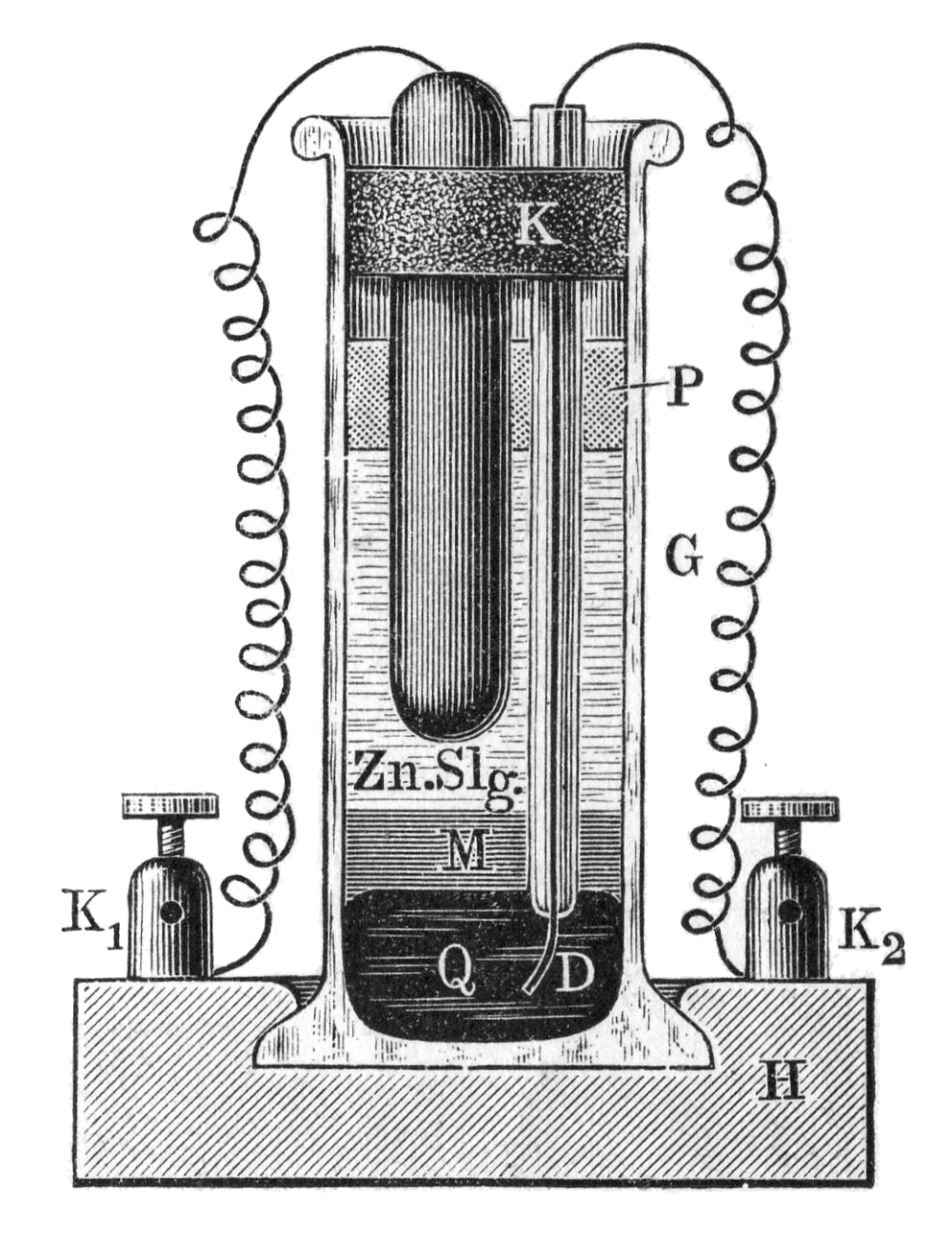 Clark Cell 1897, Wikimedia Commons
Clark Cell 1897, Wikimedia Commons
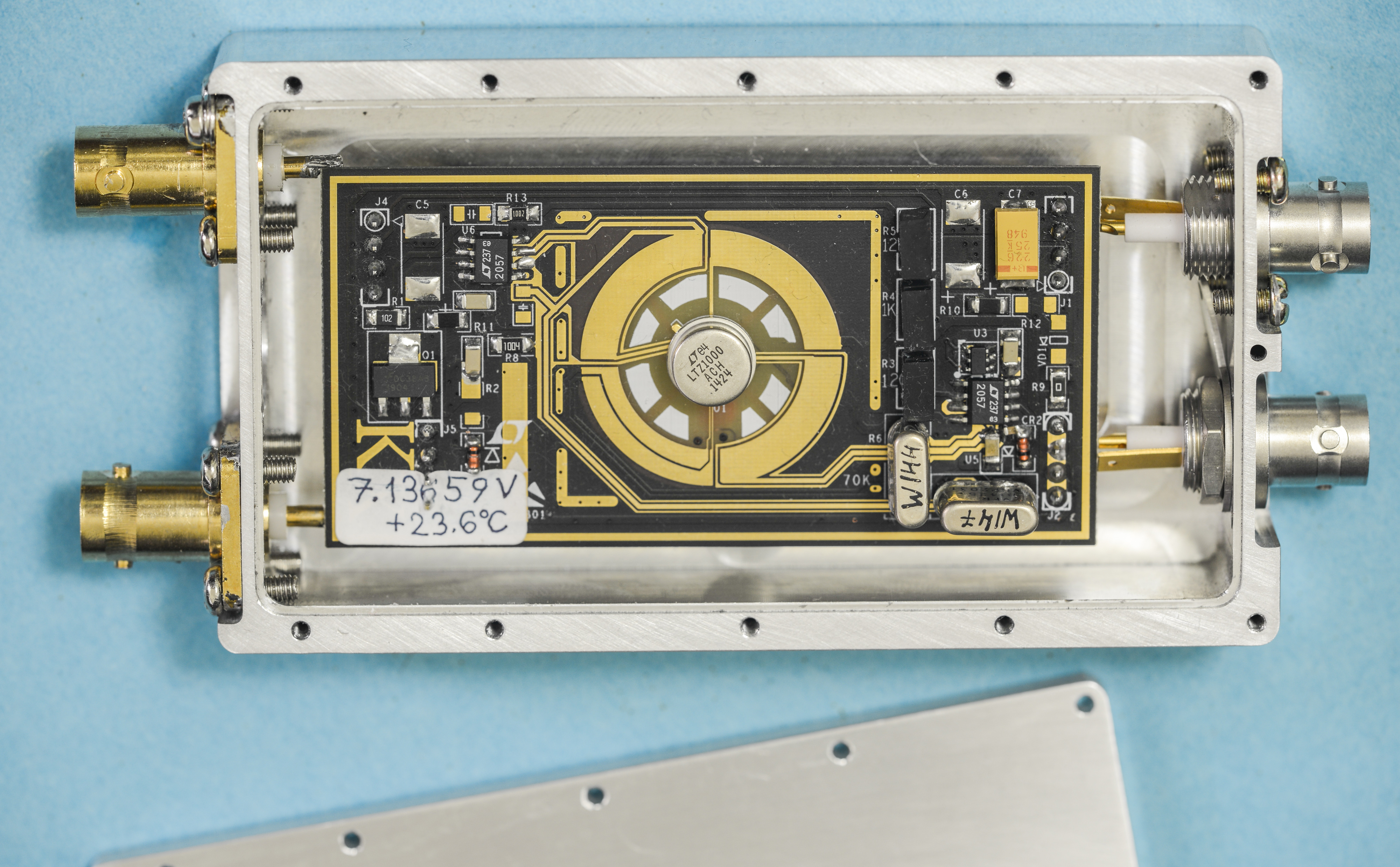
Image credit: https://xdevs.com/article/kx-ref/, copyright Illya Tsemenko
Time References
 Huygens pendulum, fixed period pendulum
Huygens pendulum, fixed period pendulum
Caesium: primary “atomic clocks”, 1E-11
- spendy, large, used for UTC standard
Rubidium: secondary commercial standard, 5E-11

Cqdx, CC BY-SA 3.0 https://creativecommons.org/licenses/by-sa/3.0, via Wikimedia Commons; https://commons.wikimedia.org/wiki/File:Rb_oscillator.jpg
- ~$1k, used in GPS satellites, cellphone base stations, eBay’d by frequency standard enthusiasts
- work by “disciplining” a crystal oscillator to rubidium hyperfine transition: 6,834,682,610.904 Hz
Quartz: in most electronic devices, 0.01% to to 1E-8
- can be temperature controlled with feedback loop (TCXO) (1E-7)
- can be embedded in an oven for better temp control (OCXO) (1E-8)
- non-temp controlled: ~$1
RC oscillators: 1-10%
- can be calibrated to 0.1%
- very temperature dependent
- built in to most microcontrollers!
- often not accurate enough to support unclocked communication protocols (UART, USB, etc)
- Wow, Cheap
Phenomena
Electric Field
See Sensors, where this is discussed in detail.
Magnetic Field
High Sensitivity Magnetic Field Technology overview, Pappas
Temperature
Bimetallic uses dissimilar metals’ relative coefficients of thermal expansion to bend a beam; add a tilt switch to make a thermostat.
Thermocouples: dissimilar metals generate a voltage through the Seebeck effect. Rugged, good for high temperatures, not as accurate or stable as RTDs.
RTDs (Resistance Temperature Detectors): inherent temperature/resistance relationship for metals. Stable, accurate, can be delicate (many use fine platinum wire).
Infrared: focus thermal radiation on a semiconductor detector and compare it to blackbody radiation curve * emissivity. Array (i.e microbolometers) for thermal imaging.
Calibration: vs standard or triple-point cell (whose accuracy depends on purity of water or other substance):
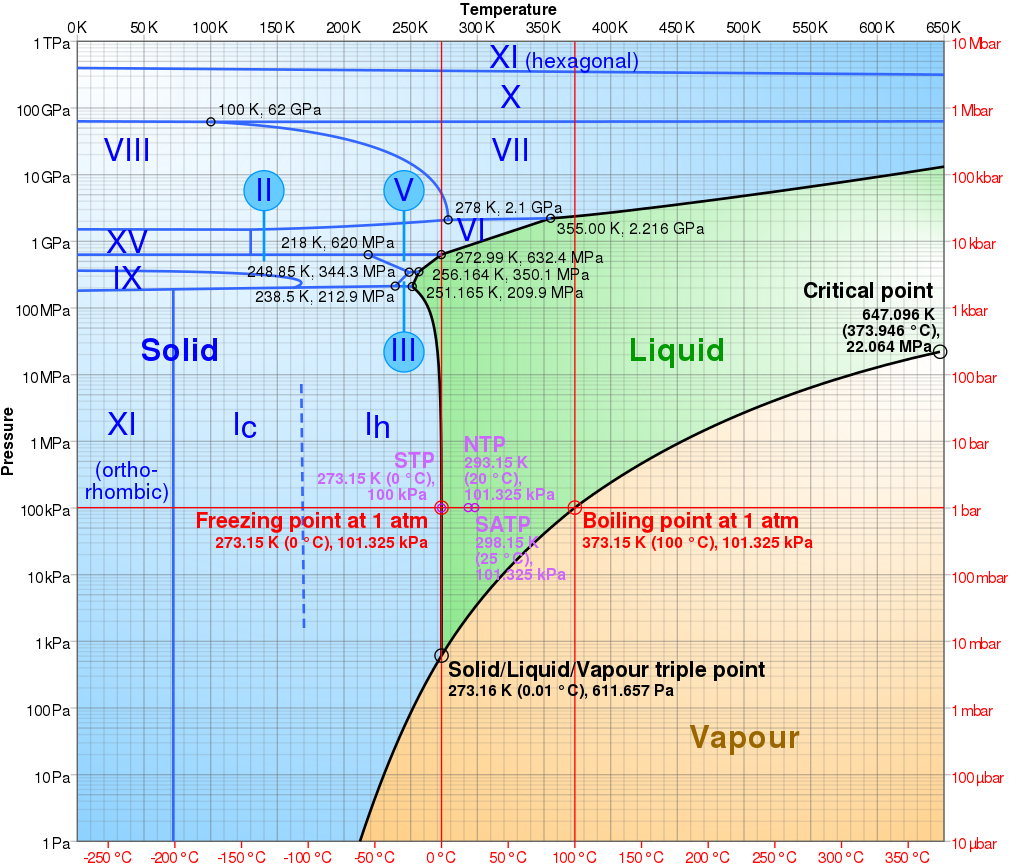
Cmglee, CC BY-SA 3.0 https://creativecommons.org/licenses/by-sa/3.0, via Wikimedia Commons; https://commons.wikimedia.org/wiki/File:Phase_diagram_of_water.svg
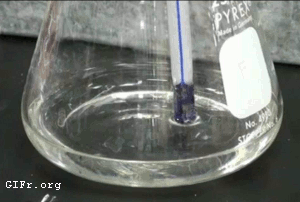
Force
Strain gauges: change in resistance vs displacement.
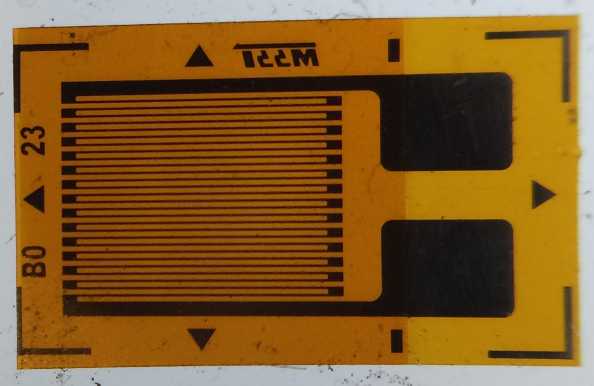
Black material is resistive, while orange material is insulative. Sensitive direction is horizontal! Pleriche, CC BY-SA 4.0 https://creativecommons.org/licenses/by-sa/4.0, via Wikimedia Commons; https://commons.wikimedia.org/wiki/File:Unmounted_strain_gauge.jpg
Glue to a beam of known material and geometry, wire four into a Whetstone bridge to make a load cell.

Izantux, CC0, via Wikimedia Commons; https://commons.wikimedia.org/wiki/File:StrainGaugeVisualization.svg
Other types: displacement sensor + beam (i.e Sam’s capacitive and inductive strain gauges
Photons
Photoelectric effect: light hits stuff, stuff emits electrons (i.e electrons are ejected)
- photomultiplier tubes (“photon counters”)
- image intensifiers
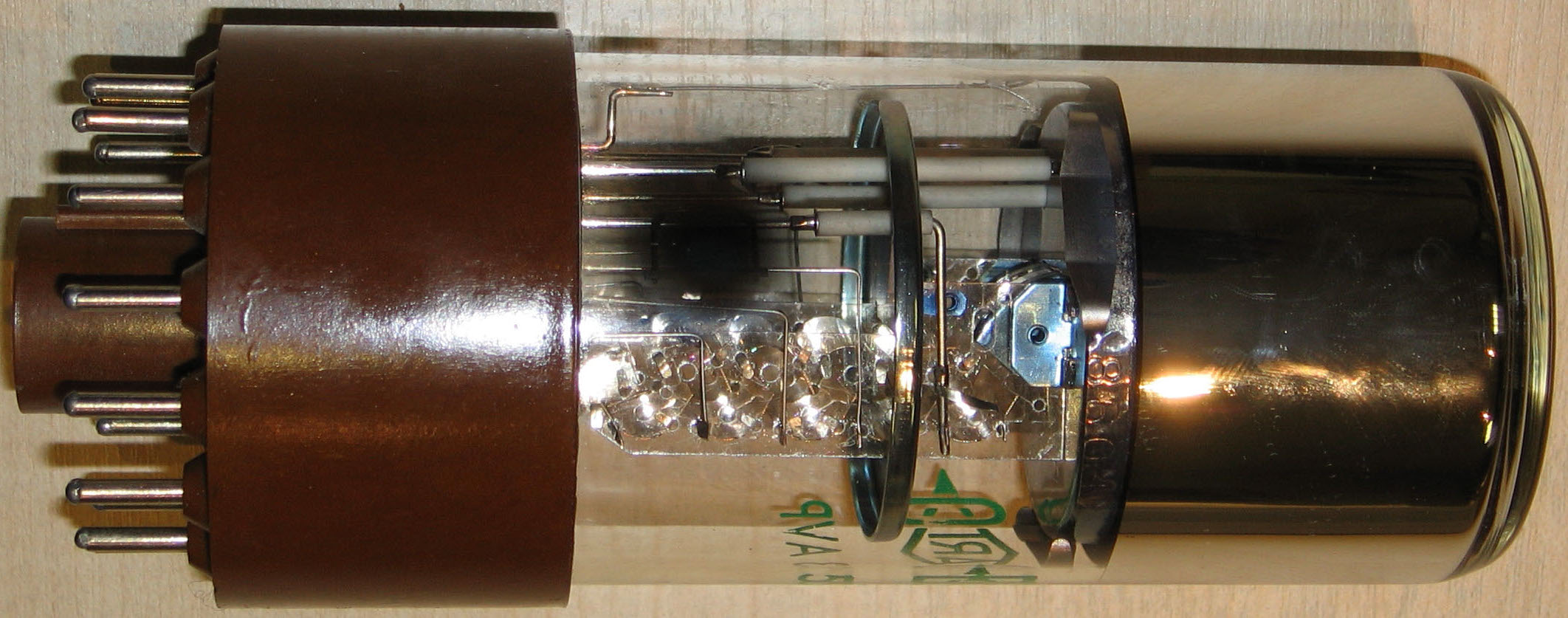
https://commons.wikimedia.org/wiki/File:Pmside.jpg
Photoconductive effect: light hit stuff, stuff changes resistivity
- Photoresistors (i.e CdS cells)

© Nevit Dilmen, CC BY-SA 3.0 https://creativecommons.org/licenses/by-sa/3.0, via Wikimedia Commons: https://commons.wikimedia.org/wiki/File:LDR_1480405_6_7_HDR_Enhancer_1.jpg
Photovoltaic effect: light hits stuff, stuff generates voltage and current (i.e charge carrier stays in material)
- solar cells: get electricity from the sun
- photodiodes: light to current, a tiny solar cell
- photovoltaic mode (no bias), photoconductive mode (reverse bias: fast, noisy)
- PIN: faster
- avalanche photodiodes: optimized for reverse bias, wow so sensitive, $$$ + 100+ VDC
- phototransistor: slower but more sensitive vs photodiodes; in the Fab inventory